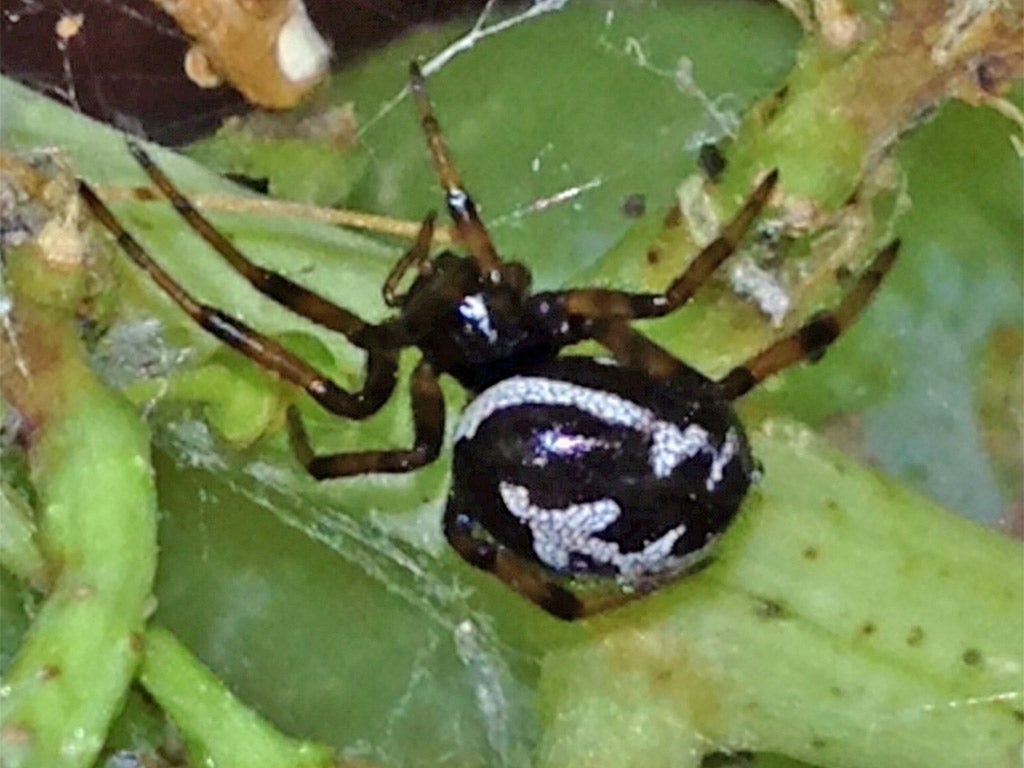False widow spiders: We're caught in a web of panic
If you believe the media, they're everywhere. The truth isn't half so terrifying

The first James Bond film, Dr No from 1962, will long be remembered for two scenes in particular, the first, of course, being the emergence from the ocean of Ursula Andress wearing little more than a diving knife. But following close behind is the attempted assassination of our hero, by tarantula.
Bond wakes in his Jamaican bed, you may recall, to find the saucer-sized spider crawling up his left arm. It doesn’t seem to be cinematic trickery: the monstrous fanged beast really does appear to be walking over the bare skin of Sean Connery, which maybe means that the sweat on his face wasn’t just down to the make-up department. Eventually, Bond beats it to death with his shoe; and audiences the world over drew breath again.
For the tarantula scene had touched something deep in everyone who saw it: arachnophobia, the fear of spiders. It is possible, that like the fear of snakes, that this is hard-wired into our genes as an evolutionary defence. With snakes, there’s little doubt, especially from the evidence of our close primate relatives: a baby chimpanzee that’s never seen a snake in its life will freak out at the sight of one. With spiders there is less certainty that the resultant alarm is hard-wired, but it is assuredly widespread. Alleged arachnophobes have ranged from JK Rowling to JRR Tolkien, and the numbers among the rest of us must be high.
This is very fertile ground, therefore, for a media frenzy, if a scary enough spider story comes along, as a classic one has just done with the spate of reports about the noble false widow spider, reputed to be the most poisonous in Britain, and now biting people.
At lunchtime yesterday Google’s news aggregator was listing 72 stories about false widows, and to scan them you would get the impression that the beasts were marching in their thousands across the land, eating babies.
But there aren’t large numbers of false widow spiders on view; there are large numbers of false widow stories, which is a quite different matter. It’s just the way the media works: a case of feeding the fire. Every freelance and local journalist across the country knows that at the moment, if he or she gets a false widow story, national media organisations will pay good money for it; every staffer on a national organisation knows that it they get such a story, it will be published. So all sort of funny stuff starts appearing.
Take the headline at the top of the Daily Mirror website yesterday afternoon: FALSE WIDOW SPIDER BITE LEAVES GRANDFATHER FIGHTING FOR LIFE AFTER HIS VITAL ORGANS SHUT DOWN.
They are marching across the country! Wow! Is the only possible answer to that – until you look at the story closely.
When did this happen – this week, you think? No. It was an unspecified time “last year”.
What actually was Grandad John Catlin suffering from? He was suffering from a “streptococcal infection” in a wound on his foot – the sort that thousands of people regularly pick up in hospital. This resulted in cellulitis, which is a very painful condition (I’ve had it myself) but which is caused by bacteria, not spider venom.
So if he did have an initial wound, last year sometime, how do we know it was from a false widow spider? Because Mr Catlin thinks it was. But what evidence is there? There doesn’t appear to be any.
All a bit rum, if you ask me, and certainly if you ask the British Arachnological Society, which insists that “the media hype about 'false widows' (by which presumably Steatoda nobilis is meant) is beyond reason and irresponsible.”
Yes, say these spider-loving types, the aforesaid beastie can give you a nip in certain circumstances, but it’s about as bad as a bee or a wasp sting, unless you have an allergic reaction, and remember, about a dozen people die from allergic reactions to bee and wasp stings every year. And no-one’s died from a false widow spider bite yet.
So where’s the fear coming from? It’s not from false widows, marching across the land. It’s from down in the genes - and we might all just as well leave it there.
Join our commenting forum
Join thought-provoking conversations, follow other Independent readers and see their replies
Comments
Bookmark popover
Removed from bookmarks